Wild Asparagus / Spring / Summer / Autumn / Edible
Wild Asparagus is a flowering, perennial member of the Asparagus family, it was once fairly common but due to changes in land use and management it’s in serious decline and is on the GB Red list for endangered species.
Common Names
Wild Asparagus, Sparrow Grass
Botanical Name
Asparagus prostratus
Scientific Classification
Kingdom – Plantae
Order – Asparagales
Family – Asparagaceae
Physical Characteristics for Wild Asparagus
Leaves
The leaves look feather like but they are sharp and tough. What we think of as the leaves are actually modified stems. The true leaves are the little triangular flap like scales that grow on the spears.
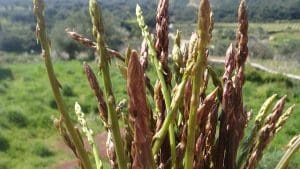
Flowers
The flowers grow in the junctions between the stems. They are white to yellowish green, are bell shaped and appear on their own or in small clusters. After the flowers have been pollinated they develop into berries. The berries are green at first but become red by around September.
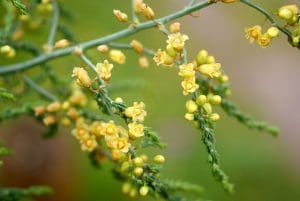
Spears
The familiar spears grow at the base of the plant. They can be up to 30m long and have triangular shaped leaf scale towards the base. They are normally deep green but often they have a reddish tinge especially if they are grown in strong sunlight.

Habitat
Its most often found near the coast, it prefers soils with a high salt content. Its main strongholds are in Devon and Cornwall.
Known Hazards
The berries are known to be toxic to humans and cause vomiting and diarrhoea.
Could be Confused with
There are many plants with similar fern like leaves but none of them produce anything that resembles Asparagus spears.
Edible Uses
The spears have a familiar Asparagus flavour but more intense. I blanch mine in boiling water for about 2 minutes, then cool them in ice water before grilling or barbecuing them until lightly charred.
Notes on Herbal Uses
They are a good source of vitamin B6, calcium, magnesium, and zinc, and a very good source of dietary fibre, protein, beta-carotene, vitamin C, vitamin E, vitamin K, thiamine, riboflavin, niacin, folic acid, iron, phosphorus, potassium, copper, manganese, and selenium, as well as chromium. They are also high in an amino acid called asparagine which gives the plant its name.
That plant has diuretic properties and has been used to treat urinary problems. In India, asparagus root have been used to strengthen the female reproductive system, promote fertility and increase breast milk production. In both ancient Eastern and Greek medicine, asparagus extracts have been used as a tonic for the prevention and cure of several ailments including those for the kidney, bladder, rheumatic, liver disease, asthma and cancer.
Extra notes from the Foragers
It really is a tasty and beneficial plant but please be mindful of its scarcity. It should be admired rather than picked!
Cultivated Asparagus (Asparagus officinalis) does appear in the wild sometimes as a garden escapee and this can be eaten. There is some debate about whether Asparagus officinalis subspecies prostrates is a subspecies or a separate species, they look very similar. Prostratus tends to look a lot less upright and tends to sprawl along the ground.
Yes they do make your wee smell, the plant contains asparagusic acid. When the vegetable is eaten some volatile sulphur-containing compounds is produced, it is these that produce the smell.
References:
what are the national trust saying.



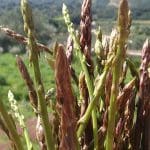
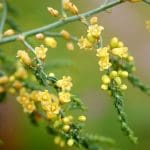
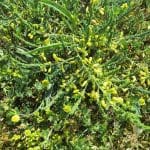
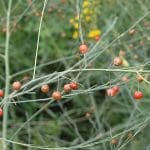



Leave a Reply
You must be logged in to post a comment.